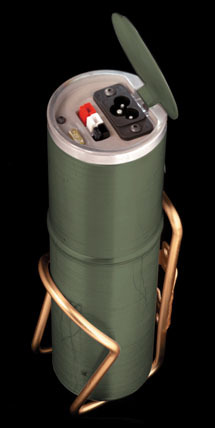
A to B Magazine Editors: David and Jane Henshaw, Somerset, England
Our resident technology expert interprets the Ex-Bike concept
Broadly speaking electric motors can be divided into two classes - those operating from a direct current (DC) supply, and those utilising an alternating, or AC, supply. DC motors - and almost everything in the bicycle field comes into this category - tend to be cheaper, heavier and cruder in their operation. The main problem is that they only operate efficiently within a fairly narrow speed range, for technical reasons that space does not permit me to dwell upon. Suffice to say, if a DC motor is forced to turn slowly, it draws a great deal of current from the supply, and without some form of protection, it will overheat and fail. Thus, for the sake of the motor, most electric bicycles only provide assistance above a set speed. So when power assistance would be most useful - for starting and hill-climbing - there is little or no power available.
In marked contrast, the Birkestrand motor is an AC device (24 volt, 300 watt, 3-phase, for the technologists), so despite its compact size (4-1/2” x 5”) and light weight (5-1/2lb) it should provide plenty of power from low speed. Rabbit claim an overall speed range of 10 to 1, so the motor could - for example - be geared to work efficiently (90-95% according to the manufacturers) at any speed between 1-1/2 mph and the legal limitiof 15 mph. Batteries, of course, only provide a direct current, so some quite complex electronics are required to produce a variable frequency AC supply for the motor, but this conversion to alternating current brings a number of useful theoretical advantages.
The best way to envisage the operation of this sort of device, is to imagine the electric current creating a magnetic field that spins around within the motor, dragging the output shaft around and propelling the machine. If the shaft rotates slower than the magnetic field - due to the extra resistance of a hill for example - a current is drawn from the battery. If the shaft rotates faster, as when cycling dow hill, a current is returned to the battery. This ‘regenerative’ braking occurs with most DC motors, but as the effect usually only comes into play at high speed, it’s little more than a scientific curiosity for cyclists. With the Electric Wheel system, the braking effect should be available right down to walking pace, recharging the battery and saving wear and tear on the brakes.


Once one has made a commitment to the complex electronics required to produce a variable alternating current, one might as well incorporate other gadgetry. Birkestrand claims that the Ex-Bike computer can be programmed to sample battery temperature, making short bursts of extra-high power permissable, and it can be programmed to cut off at any desired maximum vehicle speed. Other features include a choice of maximum power presents, cruise control, and reduced ‘get you home’ power when the batteries approach exhaustion. All very sophisticated indeed.
The initial specification for the bike featured 12 volt lead-acid batteries, but consumers found the resulting machines heavy and unwieldy. The breakthrough came with a source of reasonably priced nickel-metal hydride batteries in the Far East. The cells are encased in four aluminum tubes to improve cooling, and the 24 volt battery has a capacity of 7ah, giving a power rating of 168wh, or 312wh with the extended-range pack of 13ah cells.
The claimed charging time is only an hour, so the charger is obviously pretty special too. fitting into a standard bicycle and must incorporate some innovative sensing technology to protect the batteries during charging. Intriguingly, the company claims that the device will recharge most types of electric bicycle battery in an hour, regardless of battery construction, and will be made available with connectors for use anywhere in the world. There is expected to be a solar charge option too, making the Ex-Bike viable in remote areas...or those with sufficient solar radiation, in any event.
On paper, it’s remarkable package. The hub comes in front and rear wheel versions - for rear wheel fitment, there’s a freewheel with 15 tooth sprocket, but enough clearance for a two, or even three-speed derailleur. However, for multi-gear machines, Birkestrand recommends fitting the hub to the front wheel. Here’s the spec - get designing!